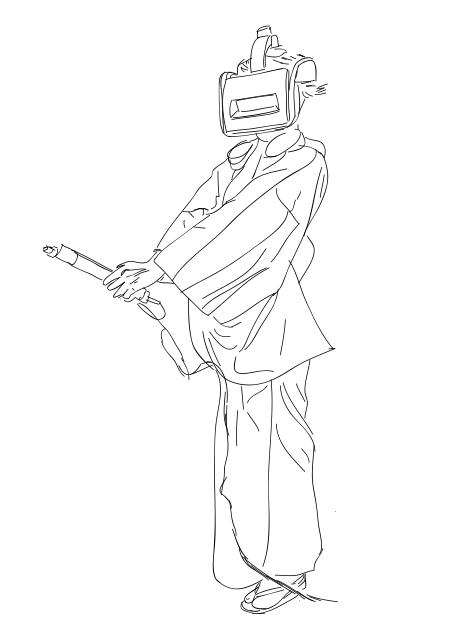
I’m pretty bad at drawing but this image stuck with me from the Graduation Show and I decided to make a sketch because I wasn’t really happy with my photos. This is a ‘back-to-the-future’ scene in more ways than one: head-mounted displays give me a strong sense of nostalgia for the early 1990s when they were all the rage in VR research. Of course, HMDs have been around since the 1960s, but only the military (or those with military research grants) could afford to build or buy them. In the mid-1980s HMDs started to be more widely available commercially, though still at pricetags so high only the best funded labs could afford to p(l)ay. That era has long passed: by the late 1990s the HMD, like the VR ‘Cave’, came to be considered a bit of a dinosaur by the HCI research community, who tend to be much more interested in less brute-force display techniques that don’t obliterate the wonderful natural sense of sight. Besides being impressed by the shiny technology and beautiful kimono, a child might wonder why the model seems to be engaging in a solo session of blind man’s buff. In the 1990s, HCI researchers were wondering the same thing. Many came to the conclusion that blind man’s buff, while fun, might not be a good interaction metaphor.
Recently, on the other hand, there are rumours Google will soon release hardware ‘Google goggles’ allowing flâneurs to search the Internet while on a stroll and show the results with a lightweight see-through display. That will be pretty cool. Not really new though, either. I first saw someone doing this (or claim so) at a conference in the early-mid-1990s. There’s good reason to believe that it was at least partly a fashion statement and, more likely than not, only partly functional at that time. But if Google’s hardware works well and is affordable, it will be cool indeed. You don’t want to know the price of an HMD of the VR ilk.


